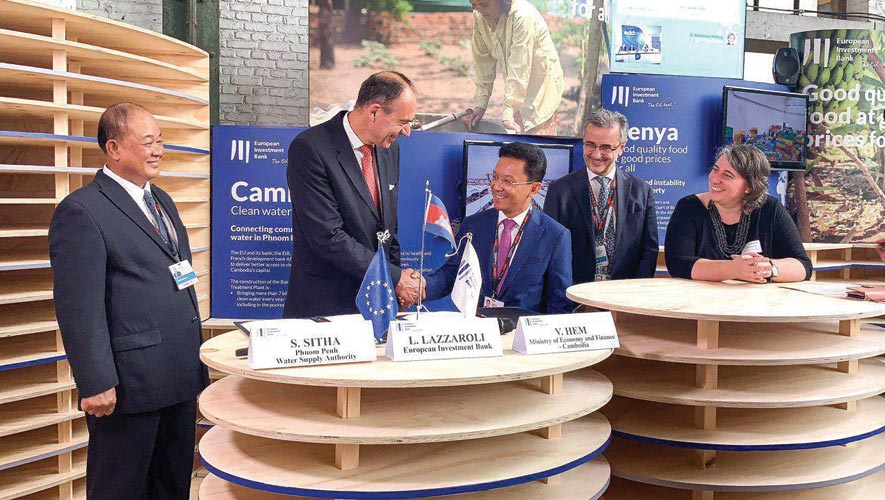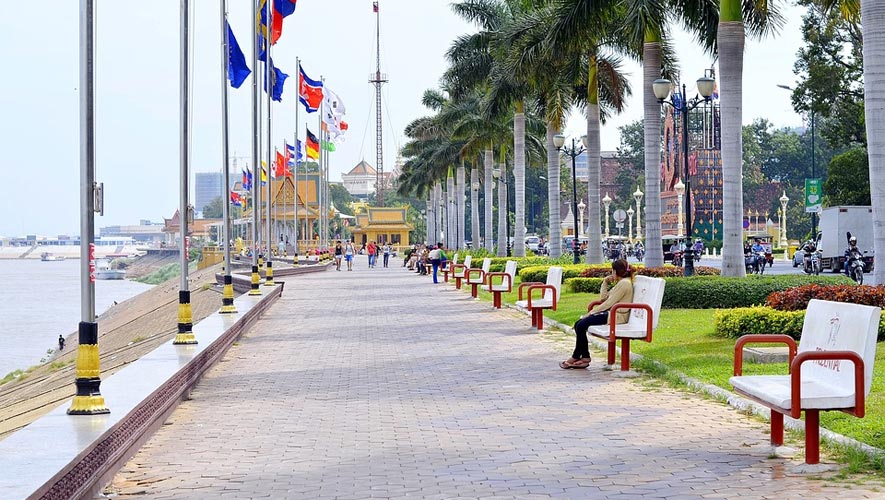Despite a flourishing economy that continues to keep Cambodia’s growth above the regional average, the need for clean drinking water often goes unmet for large portions of the population. According to the Matt Damon fronted international NGO, Water.org, there are still four million Cambodians without access to safe, clean drinking water.
For the latest Cambodian Business news, visit Khmer Times Business
This is of course a very different story for the residents of Phnom Penh and other urban hubs, but World Health Organisation (WHO) data highlights the impressive development the whole country has undergone since 1995.
Such rapid development has only been made possible through a sustained campaign of foreign aid and – as Cambodia advances to become a middle income country in 2015 – that aid transformed into concessional loans dealt out by development partners.
The magnetic pull of Phnom Penh has seen economic migration from rural areas that ultimately strains the city’s resources. In 2012, the Ministry of Planning released the Report of the Cambodian Rural Urban Migration Project (CRUMP) which saw rural to urban migration almost double between 1998 and 2012, but predicted an eight percent growth year-on-year.
All of this helps us to answer the question of why Phnom Penh is taking on €85.9 million in debt to finance a new water treatment plant in Bakheng, one of the city’s poorest areas.
Speaking with Capital Cambodia, director-general of public-listed Phnom Penh Water Supply Authority (PPWSA) Sim Sitha, reveals that the loan was needed “due to the growth of economy of Cambodia,” stating that “the water demand is dramatically high.”
Having explored financing options, Sitha confesses that it had not been easy finding a development partner who was able to front PPWSA the money while keeping the city’s water supply on track.
“We need so much water supplied to the city, hence the need for investments. How do we make water supply investment? We needed to find a financing agency (because) we wanted to finish the construction by 2022, as we did not want to be late. That is why we turned to EIB to co-finance.”
For the European Investment Bank (EIB), this is unchartered territory. While various development partners have pumped untold millions into Cambodia over the last few decades, this is the EIB’s first investment here, despite years of cooperation between EIB and EU delegates with Cambodia’s government.
“For the EIB, this project meets perfectly the objectives set by the EU External Lending Mandate, under which the bank operates,” explained a representative of the EIB Press Services by email. “It will tackle inequalities and significantly improve people’s health and daily life while increasing their resilience to climate change. The water infrastructure to be put in place, thanks to this loan will have a long economic life, so the government of Cambodia concluded the best way to finance it was by taking a long-term loan from international development finance institutions.”
While both the EIB and PPWSA concluded that that is the quickest and easiest way to meet the water demands of the capital, there are those who are alarmed by the volume of debt the country is taking on in order to fund infrastructure.
“One thing is the government doesn’t make the official data available, I have been very disturbed by that,” explains Dr Chheng Kimlong, director of the Asian Vision Institute, who claims he was told figures on public debt were not to be made public for national security reasons. “I’m a researcher, I’m an economist by trade, we need statistics to make policy and the reason for not making those figures available to us, to think-tanks, researchers, to media, it causes problems for the government.”
Neither the EIB nor PPWSA were willing to comment on the details of the loan as a matter of policy, Sitha was able to add that “this is the very soft loan, it is a concessional loan, it is less than one percent, but it is the lowest rate.”
Sitha was also keen to point out that while additional debt is never desirable, the EIB are very particular about projects they invest in.
“EIB is also looking for social water supply, here it’s social work not just business. We supply the water to the city, to the poor as we have dubbed the program water for all.”
Arguing that this will enhance the lives of those in one of the poorest parts of the capital, Sitha is confident this loan will ensure that women and children have easier, more affordable access to drinking water rather than walking to wells or relying on vendors.
The loan itself, €85.9 million ($96.9 million) from the EIB was padded out by a €13.5 million ($15.2 million) investment grant courtesy of the EU.
The French Development Agency (AFD) also signed on as a co-financier to ensure that the EIB has all the resources it needs for its first venture in Cambodia.
“Partnerships like these allow knowledge sharing between partners to maximise the development impact. This is a first project in Cambodia for the EIB, but not the AFD which has been active in the country prior to EIB’s arrival,” EIB says.
This may be EIB’s first rodeo in Cambodia, but numerous loans loom over the country as the government seeks to use them to address a range of development issues.
Ever since the Belt and Road Initiative poured millions of dollars into Cambodia’s infrastructure, concerns have been mounting about rising national debt and what it means for the future.
Dr Kimlong remains quietly optimistic about this however. “The Prime Minister [Hun Sen] is very, very cautious,” he says “Because he knows already that it will lead to instability if his country falls heavily into debt or into the debt trap, so he has to be very careful.”




